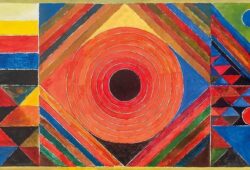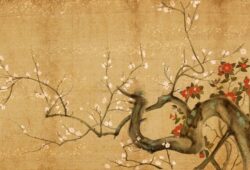The Enigmatic Smile of Mona Lisa: Unravelling Leonardo da Vinci’s Masterpiece
 Posted On
Posted On
The Mona Lisa, painted by the iconic artist Leonardo da Vinci, is undoubtedly one of the most renowned and enigmatic artworks in the history of art. This captivating portrait, believed to have been created between 1503 and 1506, continues to bewitch art enthusiasts and scholars alike, leaving them with a multitude of unanswered questions about the woman behind the enigmatic smile. In this article, we will explore the historical context, artistic techniques, and enduring allure of the Mona Lisa.
The Artist and His Masterpiece
Leonardo da Vinci, a genius of the Renaissance era, was a polymath with unparalleled talents in various disciplines, including painting, anatomy, engineering, and architecture. His artistic prowess is encapsulated in the Mona Lisa, also known as La Gioconda in Italian, which is believed to be a portrait of Lisa Gherardini, the wife of a Florentine merchant.
Artistic Techniques and Innovation
Leonardo’s mastery of artistic techniques is evident in the Mona Lisa’s striking realism and unparalleled attention to detail. The technique of sfumato, which involves blending colors and tones seamlessly, gives the painting its characteristic softness and creates a three-dimensional effect on the subject’s face. Additionally, Leonardo’s use of chiaroscuro, the play of light and shadow, imparts a sense of depth and enigma to the composition, accentuating the enigmatic smile that has captured the world’s imagination for centuries.
The Mystery Behind the Smile
The Mona Lisa’s enigmatic smile is perhaps the most debated aspect of the painting. Some art historians believe it to be a subtle expression of happiness, while others interpret it as a veil concealing deeper emotions. Leonardo’s skilful use of sfumato contributes to the ambiguity, making it difficult to discern the true emotions behind the Mona Lisa’s countenance. This ambiguity has led to numerous interpretations, ranging from contentment and secret knowledge to sorrow and melancholy.
The Landscape and Setting
The background of the Mona Lisa is a dreamlike landscape with hazy mountains and a winding river, adding a sense of mystery to the portrait. The ethereal quality of the background blurs the line between reality and imagination, allowing viewers to immerse themselves in the intriguing world of the painting.
Thefts, Vandalism, and Fame
Throughout its history, the Mona Lisa has experienced its share of misfortunes. The painting was stolen from the Louvre in 1911, drawing international attention and catapulting its fame to new heights. Two years later, the painting was recovered, and its popularity soared even further. Over the years, the Mona Lisa has also been subjected to vandalism attempts, which prompted the authorities to provide enhanced security to protect this priceless masterpiece.
Influence on Art and Pop Culture
The Mona Lisa’s impact on the art world and popular culture cannot be overstated. Its composition, technique, and enigmatic subject have inspired countless artists, writers, and filmmakers over the centuries. Parodies, references, and homages to the painting can be found in various media, cementing the Mona Lisa’s status as an enduring cultural icon.
Leonardo da Vinci’s Mona Lisa continues to captivate audiences worldwide with its enigmatic charm and timeless beauty. The painting’s mastery of artistic techniques, combined with the mystery surrounding the subject’s identity and smile, makes it an everlasting symbol of artistic brilliance. As the Mona Lisa stands proud, gazing upon millions of visitors every year, it remains an enigmatic enchanter, inviting us to contemplate the secrets hidden within its brushstrokes and to be forever mesmerized by the woman with the enigmatic smile.



